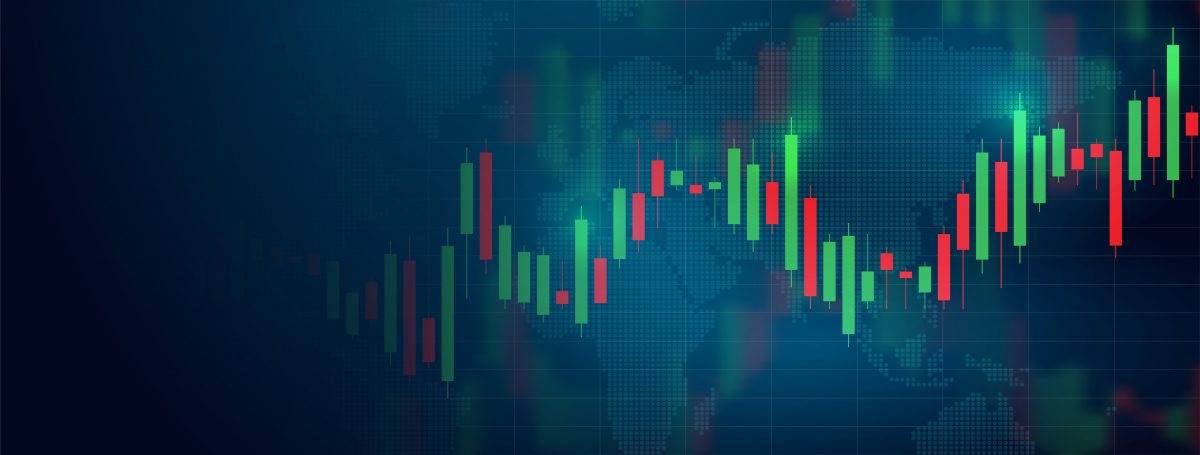Updated August 2020
While it’s true the foreign exchange (Forex or FX) market operates 24 hours a day, five days a week, it’s not constantly active.
Understanding when liquidity is likely to enter the market helps traders determine the optimal time to trade.
Liquidity and Trading Sessions
The Forex market is the largest financial market in the world.
FX trading reached $6.6 trillion per day in April 2019, up from $5.1 trillion three years earlier[1]. Liquidity in this market, therefore, is seldom a problem.
Liquidity refers to market activity. In other words, how many traders actively trade and the total volume they trade.
High liquidity in the foreign exchange market are currency pairs, major currencies, that can be traded in significant size without causing much movement. Low liquidity offers an opposite trading environment: currency pairs that have trouble handling significant size without large price movement.
A trading session is a term you’ll often hear thrown around news channels and trading forums. It consists of a period of time in one, or a few, financial centres around the world. It’s also worth noting when a major financial centre closes in observance of a national holiday, liquidity tends to thin during this time.
Major Trading Sessions:
The FX market consists of three major trading sessions: the Asian session, the London session and New York session.
According to the geographical distribution of turnover from the BIS Triennial Central Bank Survey[2], FX trading continues to be concentrated in the largest financial centres. In April 2019, sales desks in five locations – the United Kingdom, the United States, Singapore, Hong Kong SAR, and Japan – intermediated 79% of all foreign exchange trading.
The Asian trading session:
A number of countries are active during Asia, such as New Zealand, Australia (1.4%), Japan (4%), Singapore (7.6%), Hong Kong SAR (7.6%) and China (1.6%). Table 6[3]
The Asian session traditionally begins with the Sydney session at 10 pm BST, followed by Tokyo at midnight BST.
Major FX currency pairs for the Asian session are:
- USD/JPY
- NZD/USD
- AUD/USD
Volatility is notoriously low amid the Asian segment in comparison with its European and American counterparts. The market is known for consolidations. For Asian markets, economic data out of Australia, China, Japan and New Zealand tend to have the greatest impact. The Australian dollar is particularly susceptible to China’s data, specifically trade numbers[4].
As Tokyo starts wrapping up for the day, Europe and London’s doors open for business.
The London trading session:
Responsible for more than 43% (Table 6[5]) of the overall daily trading volume, the London session is considered the heavyweight session in the FX market.
Major FX currency pairs traded in London are:
- EUR/USD
- GBP/USD
- USD/CHF
- USD/CAD
The segment offers market participants a particularly favourable environment to trade breakouts and trend continuation patterns, given its size, volatility and liquidity. Currently, London trades during GMT between 8 am and 5 pm. On Sunday March 26, however, London, and most of Europe’s clocks, will move forward one hour to DST (Daylight Saving Time). At this point, London will be five hours ahead of New York. Therefore, a little before 3 pm London time (pre-open trading), the US will open, and you’ll see around two hours overlap between London and New York (three hours during GMT).
For London markets, economic numbers out of the UK, Europe and the US tend to affect price action. US data is usually released in London’s afternoon session, when US traders begin arriving at their desks: the overlap.
The New York trading session:
The New York session’s trading times are between 8 am – 5 pm local time, though some futures markets open earlier. The US is the second largest financial centre out of the three sessions and handles in excess of 16% (Table 6[6]) of the world’s daily foreign exchange transactions.
Although the US is no match for London’s financial hub, the majority of the market’s major economic news hits wires during the US morning session. News events such as non-farm payrolls, the ISM manufacturing report and key speakers out of the Federal Reserve can, at times, make the US/London overlap session volatile (2-3pm/5pm GMT). The US session also marks the end of the trading day.
As for currency pairs to focus on in this session, traders tend to look at the same units traded in London.
Are There Best Times to Trade?
As you can imagine, each trader has different obligations. Some work full time, others part time, while some are retired or are full-time carers – it really depends on individual preferences, trading strategies and goals.
As an example, a trader who works full time may only have time to check the charts once a day and, therefore, disregard trading sessions altogether – think long-term swing trader or position trader. However, it is still worth keeping an eye on major market events as large moves are regularly observed.
A trader who also works part time may only have time to trade Forex during a specific session. As such, understanding how the session operates is imperative. For instance, trying to trade breakouts is likely to be a challenge amid Asia’s hours, in view of its low volatility. Fading range extremes may yield better results. If the said trader targets London’s session, however, attempting to join a prevailing trend and trading breakout/retest moves is certainly something to consider.
It might also interest traders to note Mondays offer notoriously quiet sessions throughout the day, typically due to the lack of high-impacting news. The most volatile days of the week are Tuesday, Wednesday and Thursday for most currency pairs. Friday, particularly as the candles enter New York’s afternoon session, will see intraday activity often diminish into a consolidation phase.
The accuracy, completeness and timeliness of the information contained on this site cannot be guaranteed. IC Markets does not warranty, guarantee or make any representations, or assume any liability regarding financial results based on the use of the information in the site.
News, views, opinions, recommendations and other information obtained from sources outside of www.icmarkets.com.au, used in this site are believed to be reliable, but we cannot guarantee their accuracy or completeness. All such information is subject to change at any time without notice. IC Markets assumes no responsibility for the content of any linked site.
The fact that such links may exist does not indicate approval or endorsement of any material contained on any linked site. IC Markets is not liable for any harm caused by the transmission, through accessing the services or information on this site, of a computer virus, or other computer code or programming device that might be used to access, delete, damage, disable, disrupt or otherwise impede in any manner, the operation of the site or of any user’s software, hardware, data or property.
[1] https://www.bis.org/statistics/rpfx19_fx.pdf
[2] https://www.bis.org/statistics/rpfx19_fx.pdf
[3] https://www.bis.org/statistics/rpfx19_fx.pdf
[4] http://www.worldstopexports.com/australias-top-import-partners/




